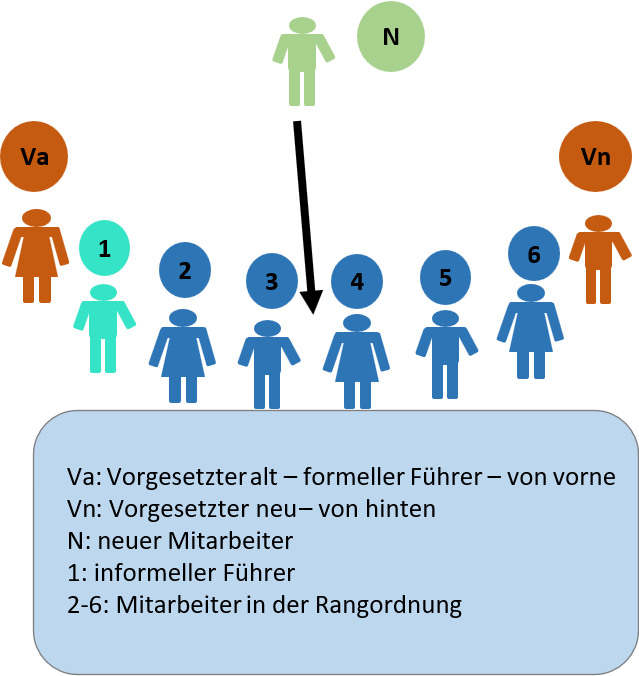Pecking Order – Leading from Behind
What humans and chickens have in common...
Pecking Order – Leading from Behind
Pecking Order – Leading from Behind
The pecking order describes the hierarchy within a social group. It defines the rules and duties of each group member.
The term pecking order comes from observing domestic chickens. Chickens establish their place in the hierarchy by "pecking" at rivals. Notably, the top chicken (alpha) pecks at all other members but is rarely pecked back. The lowest-ranked chicken (omega) gets pecked by everyone but rarely pecks others. The other chickens naturally submit to the alpha and take on different group roles.
Let's explore the pecking order within a (work) group in more detail.

The diagram shows a group's structure. Besides the Alpha (1), there are five other people (2-6). These can be Gammas, Specialists (Beta), or Troublemakers (Omega).
The numbering isn't based on a formal structure (like an org chart). It's based on personality traits, social status, performance, tenure, or similar traits. The closer a number is to the Alpha, the greater the claim to become Alpha in the future.
If a new employee (N) wants a position other than "at the back" (7), it can lead to "rank battles." To avoid such conflicts, the formal leader (Va) must ensure the new employee "lines up at the back."
When a new formal leader (Vn) joins the team, they shouldn't immediately place themselves "above" others. This causes frustration, conflict, and resistance among members. Instead, it's wise to engage and appreciate each member, creating a pleasant atmosphere.
This doesn't change the position but ensures acceptance within the group and fosters good group dynamics.
Conclusion
In conclusion, the pecking order naturally forms when a social group is created. People are individuals with unique characters. The more diverse the characters in a group, the more varied and productive it becomes. A group can't consist only of alphas and still work productively. Constant rank battles would occur.
